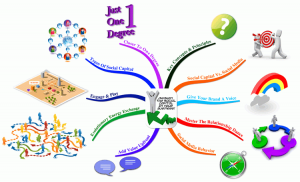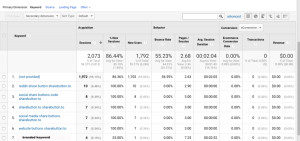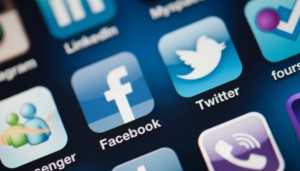As local governments begin lifting lock downs and permit more businesses to reopen, email should be one of your go-to channels to entice shoppers back into stores.
If you’re like many retailers, you’ve already sent out at least one “Woo hoo, we’re reopening!” email. Who could blame you? Getting customers back into your stores is essential to rebuild your business, even with curbside pickup and “buy online, pick up in store.”
Attracting shoppers back to your stores will take work – a lot of it. A one-off reopening email isn’t enough. Instead, create a special reopening campaign that can help you coax shoppers back with the promise of a wonderful new experience.
Note: Even if your stores aren’t open, you can start planning your reopening campaign so you’re ready when the big day comes!
Rebuilding Trust Will Be Essential For Reopening Campaigns
Two trends are driving consumer decisions about in-store shopping right now. Your reopening messages should reflect them:
1. Customers Are Wary About Shopping in Stores
Don’t let news photos of crowded bars, stores and beaches fool you. New data from eMarketer shows only 16% of shoppers are ready to return to shopping in stores, while 71% say it would take 2 to 6 months or up to a year before they were ready.
Many shoppers are worried about their health and safety and want to wait for a coronavirus vaccine or more government recommendations before resuming their hands-on shopping.
2. The Switch to Digital Shopping Could Be Permanent
People who rarely or never shopped online took it up when they had no alternative. Although some experts predict consumers will return to their in-store shopping ways, some digital-only or hybrid retailers are doubtful.
“The increased demand levels that we are experiencing are here to stay,” Chewy.com CEO Sumit Singh told Ad Age. “We do not view our first-quarter results as a one-off event.”
Walmart CEO Doug McMillion sees a similar switch: “Before this crisis, we were already seeing robust adoption of online,” he told Ad Week. “Once this crisis is more under control, people will have seen the benefits of that service and will likely continue to use it. It will become part of the ‘new normal.’”
Before You Send a Reopening Email – CHECK YOUR LISTS!
If you pumped the brakes on campaigns in March, April and May, be cautious about going back to your regular frequency now, especially if you send frequently or at high volumes. Take these three precautionary steps:
1. Check Your Email List Hygiene
If you normally send weekly but pulled back to one email message a month, for example, you might find that your first email could generate more bounces and spam complaints when you come back after a long absence.
Bounces can go up if people change or abandon their email addresses during your dormant period. Also, undeliverable or problematic addresses can pile up in your database while your email program is on “pause” if you don’t use real-time email validation at opt-in.
When you send at your normal frequency, you can weed out these bad apples every time you send. But when you stop sending, you aren’t doing regular list maintenance, and that can hurt your deliverability and sender reputation.
(Want a 30,000-foot view of your list health? Use Free List Check, a free, no-obligation service by FreshAddress that will automatically review the addresses on your list and point out general problem areas.)
2. Consider Warming up Your IP Address Again
Instead of mailing to your entire list, send in small batches first. Then, increase volume gradually. You’ll avoid sudden spikes that could set off alarms at ISPs and increase your chances of getting filtered to spam or blocked.
3. Don’t Send to Every Address in Your Database
Segment out your oldest non-responders, and send your first round of messages to subscribers who have opened or acted on your emails most recently. Don’t send to older inactive addresses until you can validate that they’re still active, deliverable addresses.
Ready to Create Your Campaign? Include These Features
Your campaign should do more than say “We’re open!” Think about it from your customer’s point of view. Are they crowding around your front door, peering in the windows and rattling the doorknob to see if you’re open? Or are they holding back, maybe dealing with illness or financial setbacks because of layoffs and furloughs?
When planning your email strategy and campaign, include these factors:
1. Use the Subject Line and Preheader to Announce Your Reopening
Avoid a vague “A message from our CEO/owner.” Here are some examples, with the subject line first and then the preheader:
- Scott’s of Stow: Our shop in Stow-on-the-Wold opens from today!/ A warm welcome awaits you
- Wimco Villas: St. Barths Opens to Visitors on June 22/Speak with a Villa Specialist
- Five Below: YES! we’re back open & safe to shop!/ let’s kickstart fun again! tap to watch our latest tv spot to learn more!
- Wallis: Our stores are now open!/We’re looking forward to welcoming you back
- Roadrunner Sports: John, We’d Love To See You!/Your Studio City Store Is Now Open!
2. Spell Out All Changes Associated with your Reopening
These include hours, new or discontinued services, contactless payments, curbside/BOPIS, and what you’re doing to keep employees and customers safe. This example from Wallis is an easily scanned, attractive design:
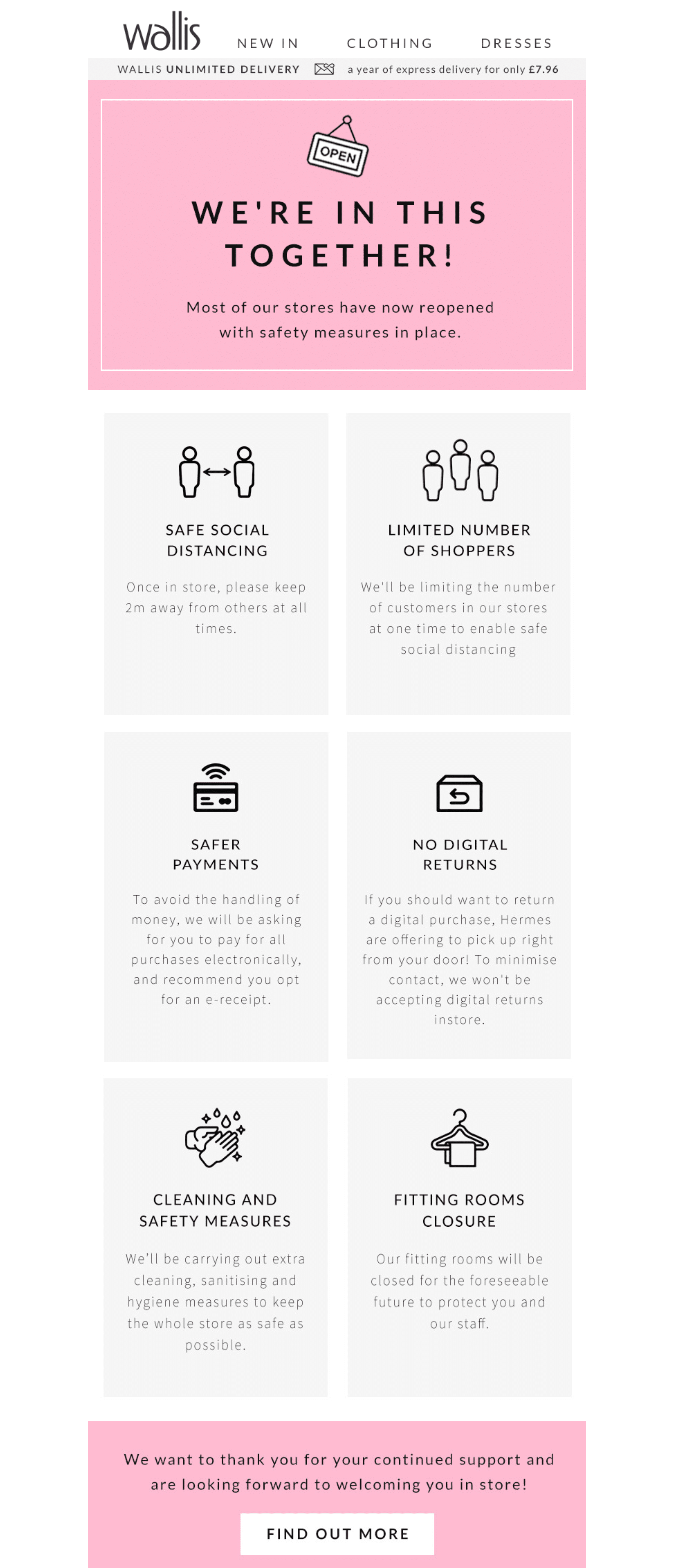
Or, you can add this info to your email template besides sending a stand-alone campaign, as Christopher and Banks does, below:
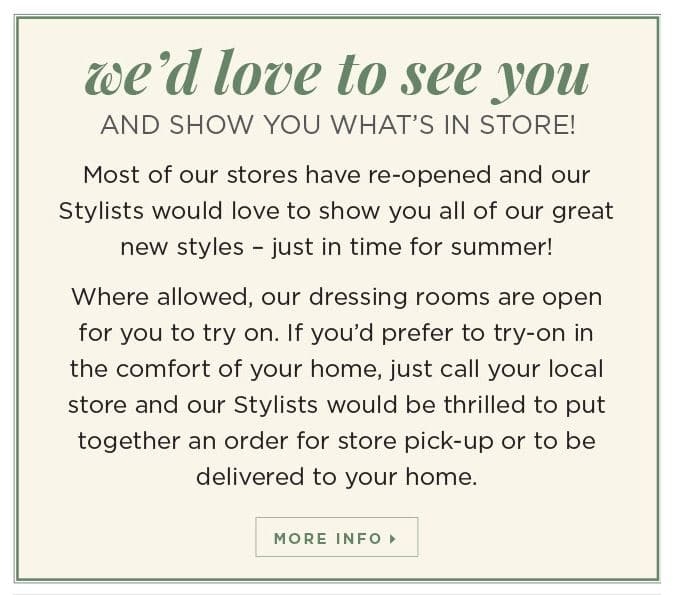
3. Design an Attractive Reopening Message
Use images and a design that highlights your most important information. That makes your message more readable than a long letter from your CEO or owner, as RH Yountville does, below:
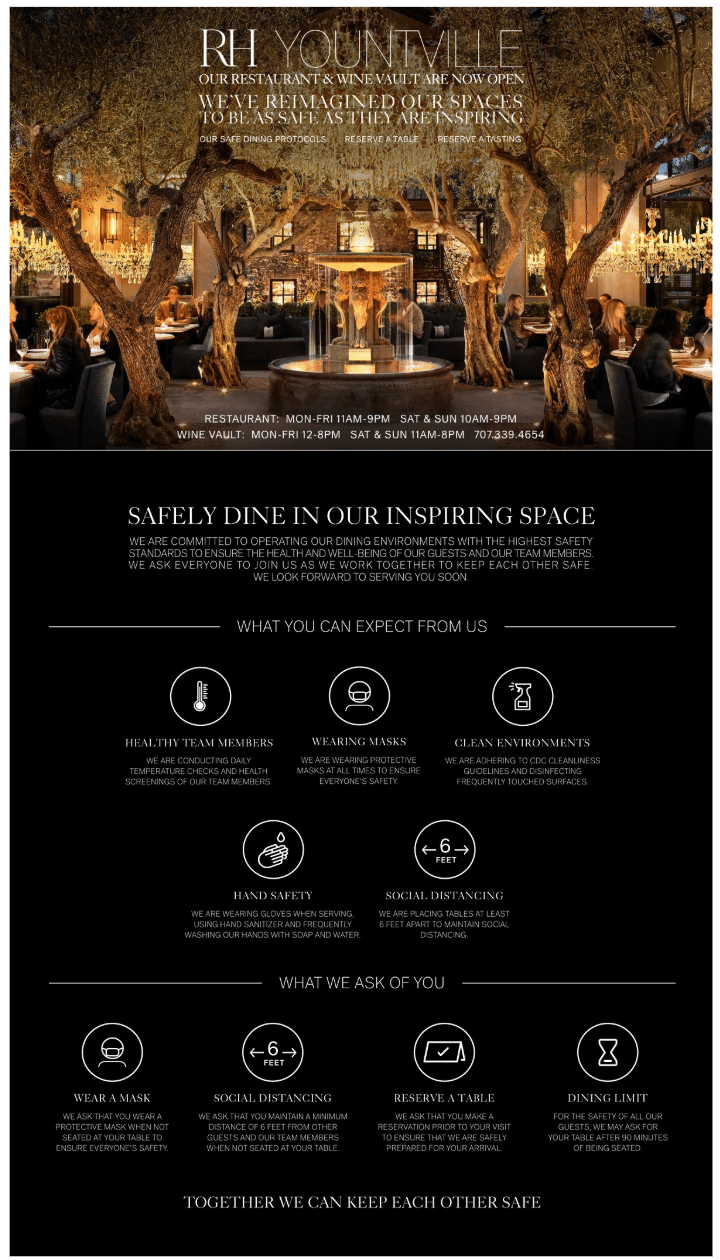
4. Send a Message Series
Instead of cramming everything into a single message, break it down into two or three emails sent over several days. Besides making your reopening announcement easier to digest, these can be an easy way to warm up your IP and watch for deliverability problems.
This series from chocolatier L.A. Burdick shows how to progress through a gradual reopening plan. It’s a handy model to follow in case coronavirus infections spike and your local government orders another shutdown.
1. Some Stores Open for Pickup

2. More Stores Reopen
3. All Stores Open
One last tip: Personalize!
It’s last, but definitely not least. If you have location information on your subscribers, use it to let them know they really care about: what’s happening at their stores. Don’t just make them click your “Find a Store” button – put the info right in the email and make it even more memorable, useful and valuable.
Digital & Social Articles on Business 2 Community
(35)
Report Post
